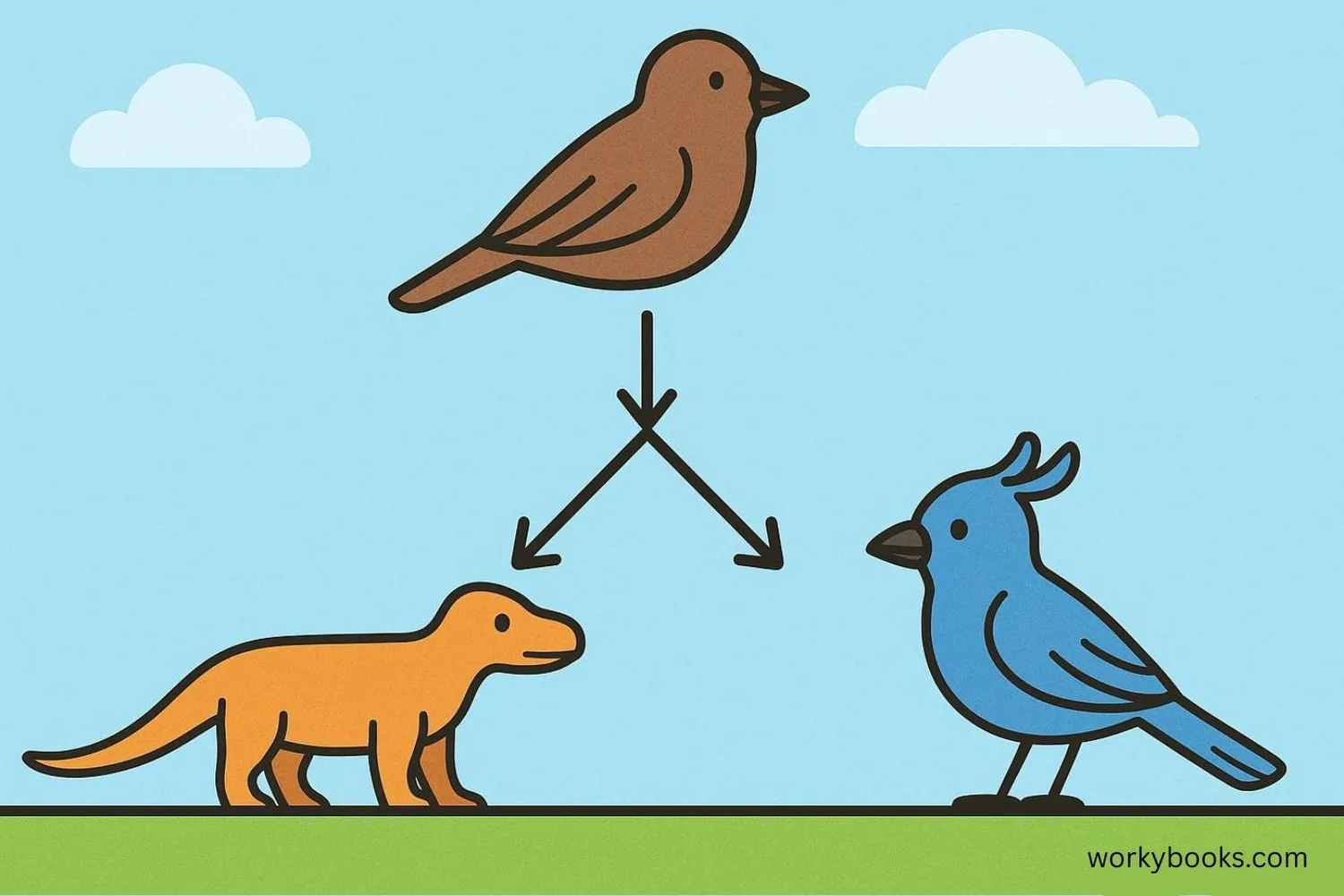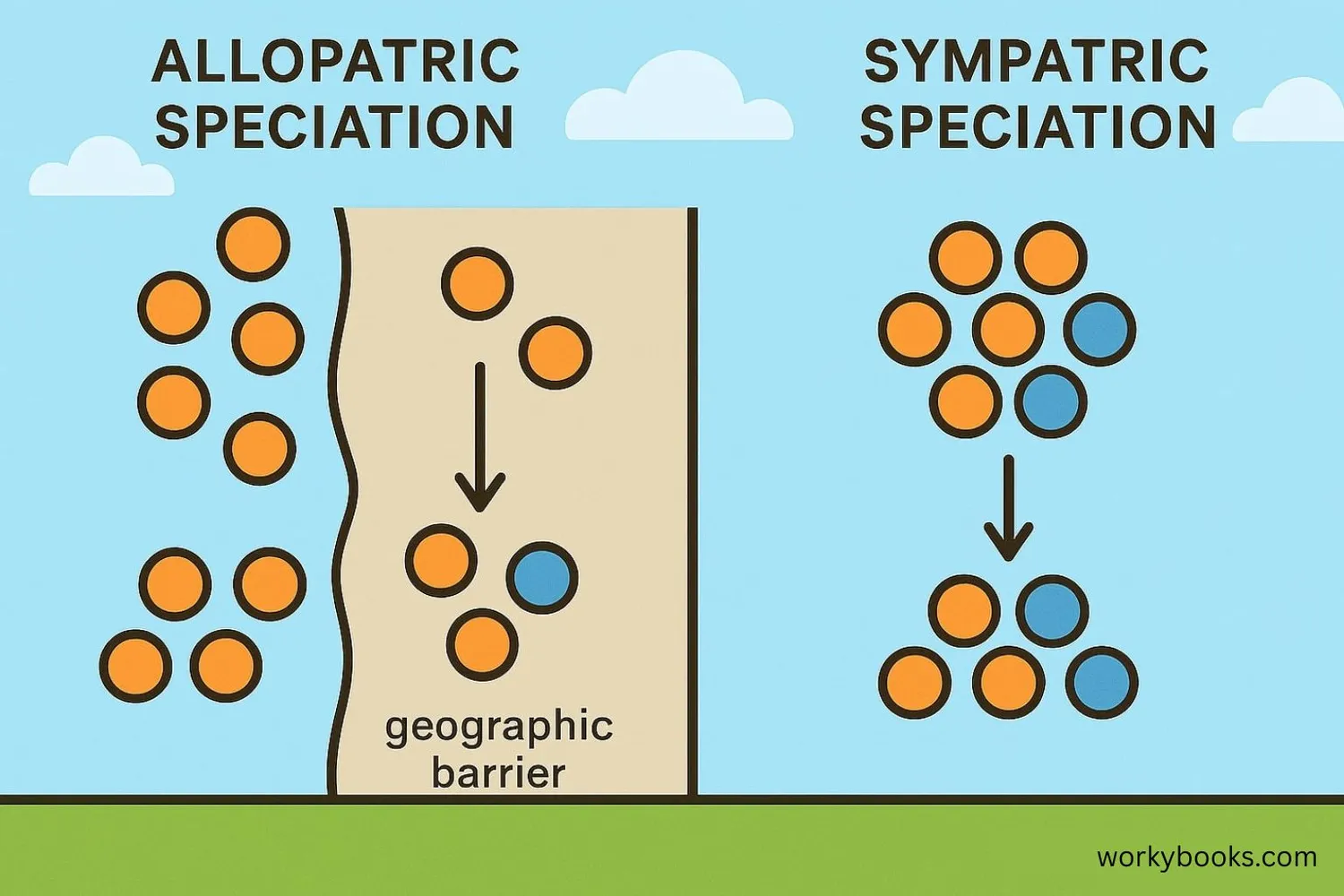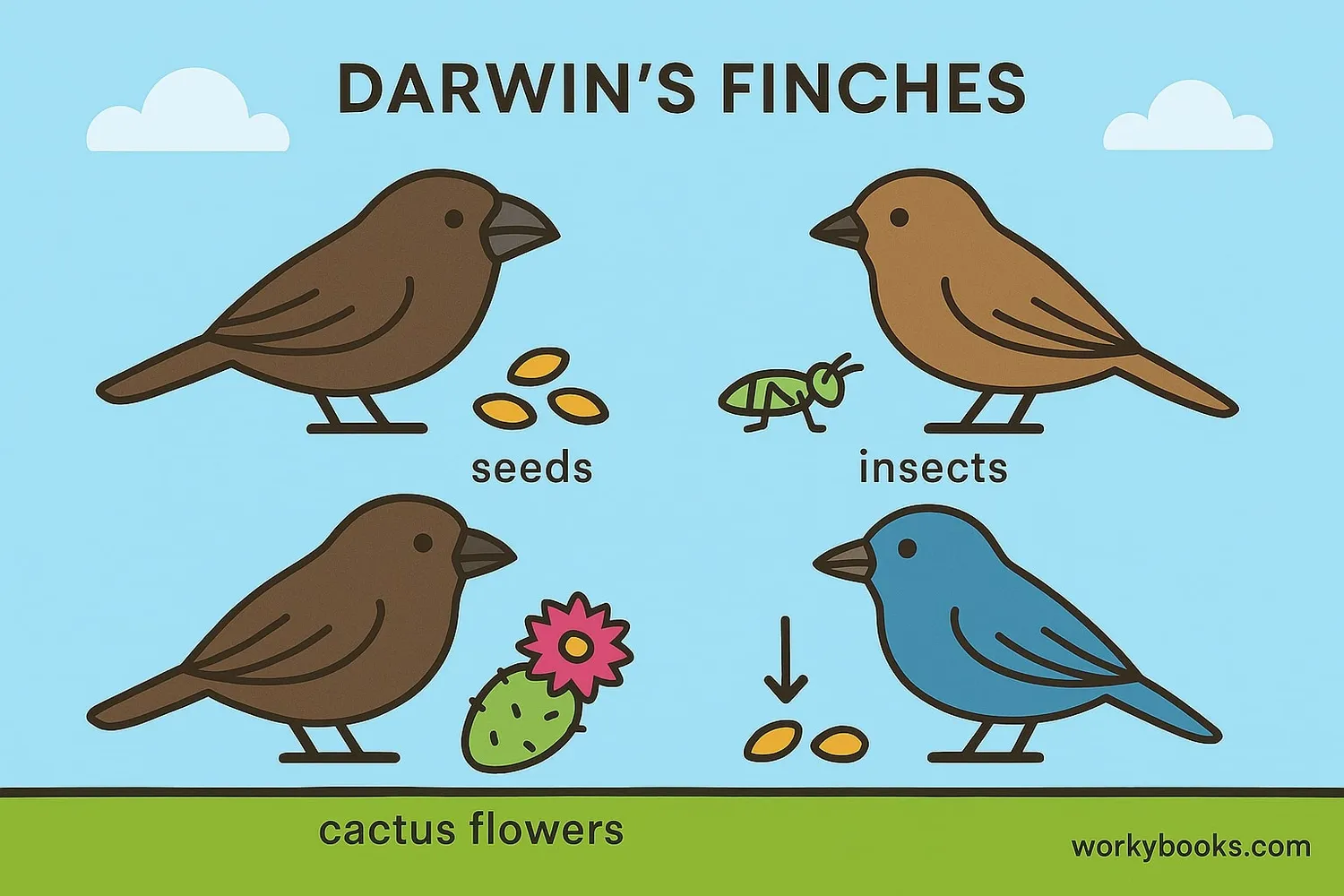Speciation - Definition, Examples, Quiz, FAQ, Trivia
Discover how populations evolve into distinct species through natural processes
What is Speciation?

Speciation is the evolutionary process by which populations evolve to become distinct species. It happens when groups within a species become separated and develop their own unique characteristics over time.
Think of it like a family tree where branches represent different species. All the branches start from the same trunk, but as they grow in different directions, they become more and more different from each other.
For speciation to occur, something must prevent different groups from interbreeding. This separation allows each group to evolve in its own direction until they become so different they can no longer produce offspring together.
Key Concept
A species is often defined as a group of organisms that can interbreed and produce fertile offspring. Speciation occurs when this ability is lost between populations.
Types of Speciation

There are several ways speciation can happen. The main types are:
Allopatric Speciation
Occurs when a physical barrier (like a mountain range or body of water) divides a population
Sympatric Speciation
Happens within the same geographic area without physical separation
Parapatric Speciation
Occurs when populations are mostly separated but have a small area where they can meet
Peripatric Speciation
Happens when a small group breaks away from the main population and becomes isolated
Allopatric speciation is the most common type. When populations are separated, they experience different environments, predators, and food sources. These differences lead to different evolutionary changes in each group.
Over many generations, the separated populations become so different that even if they come back together, they can no longer interbreed successfully. At this point, they have become separate species.
Island Evolution
Islands are natural laboratories for speciation. Isolated populations often evolve into unique species found nowhere else, like the finches Darwin studied on the Galápagos Islands.
Examples of Speciation

Speciation has created the amazing biodiversity we see on Earth today. Here are some famous examples:
Darwin's Finches
14 species evolved from a single ancestor on the Galápagos Islands, each with beaks adapted to different food sources
Cichlid Fish
Over 500 species evolved in Lake Victoria, each adapted to different habitats and food sources
Apple Maggot Flies
Some flies adapted to lay eggs on apples instead of hawthorn fruit, leading to reproductive isolation
These examples show how environmental factors and adaptation to different resources can lead to the formation of new species over time.
In the case of Darwin's finches, different islands had different types of food available. Finches with beak shapes that worked well for the available food survived and reproduced more successfully. Over time, each island population developed beak shapes specialized for their particular food source.
Rapid Speciation
While speciation usually takes thousands of years, some cases happen much faster. The cichlid fish in Lake Victoria may have speciated in as little as 15,000 years!
Speciation Quiz
Test your knowledge about speciation with this quiz. Answer all 5 questions to see how much you've learned.
Frequently Asked Questions
Here are answers to some common questions about speciation:
Science Trivia
Discover some fascinating facts about speciation and evolution!
Evolutionary Time
There are an estimated 8.7 million species on Earth, but scientists believe more than 99% of all species that ever existed are now extinct!
Island Diversity
Islands make up only 5% of Earth's land area but are home to 20% of all bird, plant, and reptile species. This is because isolation promotes speciation.
Human Evolution
Modern humans (Homo sapiens) and Neanderthals were different species that evolved from a common ancestor. DNA evidence shows they occasionally interbred.
Rapid Evolution
Some species can evolve surprisingly quickly. The peppered moth in England changed from mostly light-colored to mostly dark-colored in just 50 years due to pollution.





